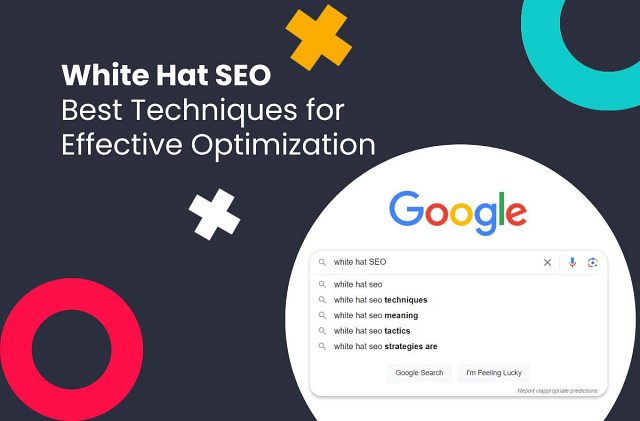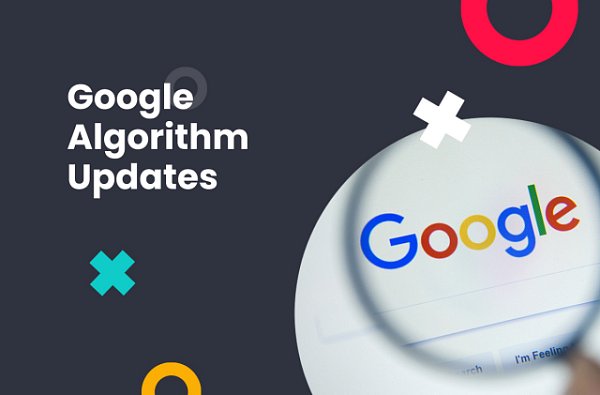(12 min. read)

What is White Hat SEO?
Google and other search engines have been fighting spammy and manipulative techniques since their founding, continuously looking for ways to refine their algorithms to favor sites that offer genuine value to users. Over the years, updates to Google like Penguin, Panda, or the many spam updates have evolved this algorithm and reduced the effectiveness of illicit tactics. In order to show search engines that value, website owners employ a range of White Hat SEO strategies.
White Hat SEO is an umbrella term for all practices and techniques of optimizing a website that adhere to search engine guidelines and ethical standards. In contrast to Black Hat SEO, which includes strategies that seek to exploit loopholes in search engine algorithms for quick gains, White Hat SEO is focused on a more sustainable approach and long-term benefits, prioritizing the user experience and the creation of quality content. White Hat strategies usually include techniques like effective use of keywords, keeping your website accessible, improving site speed, or uploading high-quality content regularly.
White Hat vs. Black Hat SEO
How you approach improving your website’s visibility can have far-reaching consequences for your standing with Google. Some website owners decide on techniques that may be less fair towards other internet users, coerced by the opportunity for quick and effortless visibility increase. However, just like other get rich quick schemes, Black Hat SEO techniques carry significant risks and are not sustainable long-term.
White Hat SEO
White Hat SEO includes techniques that comply with search engine guidelines and focus on a human audience, as opposed to simply pleasing the search engine’s ranking algorithm. The main goal of these positioning strategies is to enhance the website’s SEO performance while maintaining integrity and offering value to visitors.
Using keywords naturally, creating informative and engaging content that is useful to the audience, optimizing website usability, or building high-quality inbound links are some of the most popular White Hat SEO techniques used today — all designed to produce long-term results, although they might take some time before they bear fruit.
Black Hat SEO
On the other hand, Black Hat SEO involves tactics that attempt to trick or manipulate search engine algorithms to gain higher rankings quicker. This approach is focused on quick wins that often disregard user experience and ethical guidelines, aiming only to boost the website’s positioning at all cost. Common Black Hat techniques include keyword stuffing and cloaking, using hidden text or links on your website, creating doorway pages, etc.
These strategies promise immediate improvement in search rankings, but they pose a significant risk of penalization by search engines like Google, which can dramatically decrease visibility and even result in complete removal from search results.
The Gray Hat Area
Between the clear ethical boundaries defined by White and Black Hat SEO techniques lies a murky middle ground, known as the Gray Hat area of SEO. These approaches include tactics that aren’t as explicitly outlined or penalized by search engine guidelines but may still be considered dubious when discovered. Gray Hat SEO is often used by those who want a quick boost to their positioning, but are too afraid of crossing into the high-risk territory of Black Hat methods. These techniques are not risk-free themselves, however.
Some examples of Gray Hat SEO tactics might include:
- Article Spinning: Rewriting existing content to avoid penalties for duplicate content, which often results in lower quality and less useful pages that don’t bring anything new to the table.
- Link Exchanges: Trading links with other websites to boost link popularity, which isn’t inherently harmful, but can quickly become problematic if overused or done inorganically.
- Using Clickbait: Misleading headlines that attract clicks but don’t deliver on their promises in the actual content are common in search results nowadays. They may be effective in generating clicks, but can damage the reputability of your website and cause users to drift away from your site.
It might seem like Gray Hat techniques offer a competitive edge without immediate penalties, but keep in mind that they do carry risks. Search engines continuously update and refine their algorithms to identify and discourage such practices. Therefore, what is considered Gray Hat today might become Black Hat tomorrow - which happened many times before - leading to penalties and loss of ranking.
White Hat SEO Techniques You Have to Implement on Your Website
A great way to make sure your website can reach and retain a high ranking in Google search results is to employ proven and tested White Hat SEO techniques. These methods align with search engine guidelines and are generally risk-free, making them essential for any long-term SEO strategy - let’s take a closer look at some of them:
1. Creating Quality Content
Content is still the #1 driving force behind SEO, and this probably won’t change anytime soon. Creating engaging and informative content is crucial — content which can provide real value to your audience, addressing their needs, solving their problems, and answering their questions. It needs to be well-researched and regularly updated to keep it relevant and fresh for your audiences. Use Helpful Content Guidelines to see if your content is created in accordance with Google’s recommendations.
2. Keyword Research and Usage
Understanding and using keywords effectively is central to White Hat SEO - this involves researching keywords that are relevant to your business and your audience’s search behaviors. Once you identify the keywords, they should be naturally integrated into your content. Put them in titles, headings, and into the body text to help search engines understand the context of your pages - but be mindful of keyword stuffing!
3. Mobile Optimization
In the modern world, more people have access to a mobile phone than a working toilet, meaning making your website mobile-friendly is no longer optional. Mobile optimization involves designing your site to offer an excellent user experience regardless of device, including fast loading times on mobile devices, responsive design elements, accessible navigation, etc. Google’s mobile-first indexing makes this even more critical, as it bases ranking on the mobile version of your site primarily.
4. Site Speed Improvements
Site speed is a crucial factor in both user experience and SEO. Faster websites have better engagement metrics on average, such as lower bounce rates and longer visit durations, positively affecting rankings. Techniques to improve your site speed include optimizing image sizes, leveraging browser caching, and minimizing HTTP requests.
5. Internal Linking
Internal linking helps search engines discover new pages on your website and understand their context and relationship to other content. It can enhance the navigation around your site for users and helps spread link equity across your pages, boosting the SEO performance of your entire site.
White Hat Link Building Strategies
Link building is a crucial component of SEO, essential for improving website authority and search rankings. However, it is also essential to approach this process ethically to align with Google’s guidelines and maintain the integrity of your site. Follow these white hat link building strategies to build a more sustainable link profile:
Linkable Assets
Creating linkable assets refers to the practice of developing high-quality content specifically designed to attract backlinks naturally. These assets are usually something very helpful and informative for the audience, such as comprehensive guides, infographics, original research, or tools - something that provides substantial value to users and is highly shareable.
The key here is to create content that stands out enough that other websites, including influencers and industry leaders, want to reference it in their own content. Of course this is easier said than done, but when executed correctly, this approach can enhance your visibility and boost your credibility and authority at the same time, naturally attracting links.
Guest Posting
Guest posting involves writing articles for other reputable websites in your industry, allowing you to reach a broader audience and showcase your expertise. This way, you get to secure valuable backlinks from established sites while providing them with high-quality content in return.
It’s crucial to focus on quality over quantity in guest posting, mainly by selecting only reputable sites whose audience is relevant to your niche. Your guest posts should also provide unique insights or valuable information, not just to gain a backlink, but to genuinely engage the reading audience.
Outreach
Outreach is fundamental to successful link building - very often you’ll have to contact other website owners and bloggers yourself to introduce your content and suggest that they link to it. This requires finesse, but can be much more effective than just waiting for someone to stumble upon your content.
Effective outreach is highly targeted; you should make sure that the content you are promoting is very relevant to the recipient’s interests or needs. Be concise in your communication and clearly state why linking to your content would benefit them or their audience. Focus on building relationships with other websites, not simply getting your content posted and forgetting.
HARO
Help a Reporter Out (HARO, now known as Connectively) is a platform where journalists and bloggers post requests for sources for their upcoming stories. By responding to these queries, you can get high-quality backlinks from news sites and other authoritative publications. When using HARO, respond quickly and thoroughly, providing detailed answers or insights that reporters can use directly in their articles.
Black Hat SEO Tactics You Should Avoid
While Black Hat SEO tactics can seem as tempting shortcuts to higher rankings, they come with very significant risks, including penalties and permanent damage to your reputation. Understanding these practices is crucial to avoid using them inadvertently and protect your site from competitors who might use such tactics against you.
Hidden Content
Have you ever stumbled upon text or links on a page placed in a way that it is invisible to visitors? Most probably, this hidden content was placed to be readable by search engines, but isn’t actual content intended for readers. Some website owners set the text color the same as the background, hide text behind images, or use CSS to position text off-screen.
This tactic is used to manipulate search engine algorithms by stuffing keywords that are not visible to users. Search engines, however, have become adept at detecting such tactics and will penalize sites that engage in these practices.
Cloaking
Cloaking refers to the practice of presenting different content or URLs to users and search engines. A site might show one piece of content to the search engine crawlers to achieve higher rankings for certain keywords, while users see another content entirely. This deceptive practice can lead to a poor user experience and is strictly against search engine guidelines — websites caught cloaking will be penalized, including being de-indexed.
Keyword Stuffing
Keywords stuffing involves overloading web pages with keywords or numbers in an attempt to manipulate a site’s ranking in search results. This often results in poor user experience, as the content becomes difficult to read and may seem nonsensical. Modern search engines are designed to recognize and automatically penalize this practice.
Using Automated Blog Comments
Don’t be tempted to use automated tools to generate comments to blogs or forums. Some web owners use these tools to boost perceived traffic and engagement on their site, but the practice is often caught by Google and severely penalized.
Link Spamming
Placing links to your site across various platforms without regard for the context or value is called link spamming. This practice is considered spammy and unethical by search engine guidelines and can result in degradation of your site’s rank.
Copying Content from Other Sites
Copying or scraping content from other sites and republishing it as your own is not only unethical, but also illegal. Plagiarism can lead to severe consequences, not limited to positioning, including legal action from the original creator. Original, high-quality content is a cornerstone of White Hat SEO and is critical for achieving and maintaining good search rankings.
White Hat SEO Checklist
Now that you know how to distinguish White Hat SEO techniques from Black Hat SEO tactics, compare your own efforts against this checklist to make sure you align with search engine guidelines and best practices:
High-Quality, Unique, and User-Friendly Content
Content Value: Focus on generating content that is informative and answers the questions your audience is asking. Content should be well-researched and provide substantial value to users.
Uniqueness: Avoid duplicate content issues by making sure that all content on your site is original and not copied from elsewhere. Unique content helps differentiate your site from competitors and contributes to a better search engine ranking.
User-Friendly and Readable Content Formats
Content Structure: Use headers, bullet points, and short paragraphs to make your content easy to read and navigate. A well-structured article or webpage helps users find the information they need quickly and improves overall engagement.
Readability: Use clear, concise language and avoid jargon where possible. The goal is to make your content accessible to a broad audience, including those who may not be familiar with your industry.
On-Page SEO Optimization
Title Tags and Meta Descriptions: These elements should include relevant keywords and provide a clear description of the page’s content.
Header Tags: Organize content using H1, H2, and other headers to help search engines understand the structure and key points of your pages.
Alt Text for Images: See to it that all images on your site include descriptive alt text, which helps search engines understand the image content and can improve accessibility.
Website Responsiveness
Mobile Optimization: Verify that your site is responsive, meaning it adapts to different device screens, particularly mobiles and tablets. This is crucial as mobile traffic continues to rise and search engines favor mobile-friendly websites.
Speed Optimization: Work on reducing load times by compressing images, leveraging browser caching, and minimizing code (CSS, JavaScript, etc.). Faster sites provide a better user experience and are favored in search rankings.
User-Friendliness
Navigation and User Experience: Design your site with the user in mind. Navigation should be intuitive, and finding information should be straightforward. A positive user experience increases the likelihood of visitors returning to the site and decreases bounce rates.
Ethical Link Building
Link Building: Focus on acquiring backlinks from reputable sources that are relevant to your content. Prioritize quality over quantity, and engage in natural link-building practices like creating linkable assets, participating in relevant discussions, and guest posting on respected sites.
Follow this guide to make sure that your website follows search engine guidelines, offering genuine value to visitors while climbing in rankings. White Hat SEO techniques help establish your site as a trustworthy and authoritative source in your field — it is the only approach that guarantees long-term sustainability in your digital marketing efforts.


